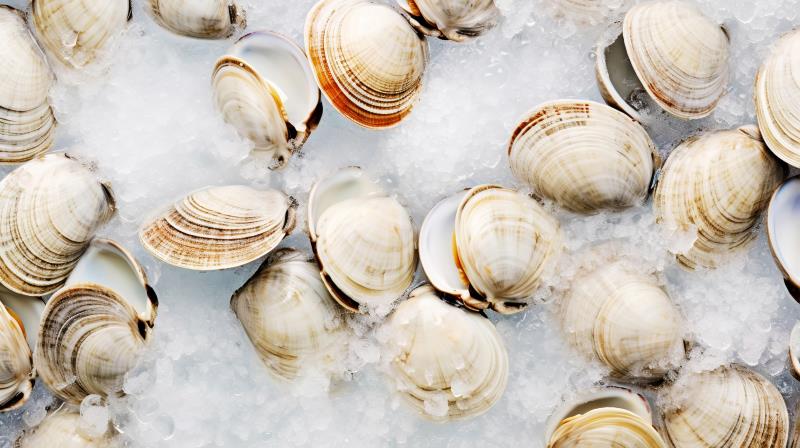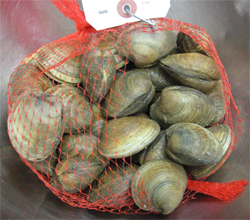The ocean waters are getting colder, which ushers in the prime season for live mussels from Penn Cove, Washington, North Atlantic clams, or fresh Virginia oysters. The import of live and fresh shellfish can raise ServSafe MN questions, such as how to keep shellfish alive during the storage of these seasonal catches.

Fresh Shellfish Storage Tips For ServSafe Managers
In the case of clams and mussels, the best time to cook them is when they are still alive. We recommend that they be cooked, processed, or sold within a day or two of their arrival. This will ensure incredible quality and freshness as well as reduce foodborne illness.
Upon receiving your fresh shellfish and before storage, we first recommend that ServSafe managers inspect them. If they have a pungent odor or you see several open shells, your shipment inevitably has dead clams, mussels, or oysters. The second thing we recommend is that you rinse shellfish under cold, running water. As you do this, be aware that live shellfish will drown if kept under unmoving water.
Once you have rinsed them, ignore your instincts to clean your shellfish, especially mussels. Many times, you will see plant life attached to mussels. This plant life can be attached to the membrane, which holds the shell shut. Removing it will damage and kill your mussels. We suggest that you wait to clean shellfish until just before processing.
ServSafe managers must train staff to keep live shellfish in refrigerated storage under 40oF. They should be stored in a perforated pan and covered with ice. Ensure you place your perforated pan in a deep enough container to accommodate ice melt. Remember that live shellfish will die if submerged.
You should also periodically check your shellfish. A good sign of a dead clam is an open clam while all the other clams are shut firmly. Remove dead shellfish as soon as possible to prevent contamination.
Allergy Concerns
With live shellfish, it is always recommended that you remember that many people can have severe allergic reactions to the slightest contact. To prevent cross-contamination with non-seafood items, ServSafe Managers should store your shellfish as far away as possible from other foods, and never above or below other raw meats. A good suggestion would be to store shellfish on a bottom shelf under packaged foods.

